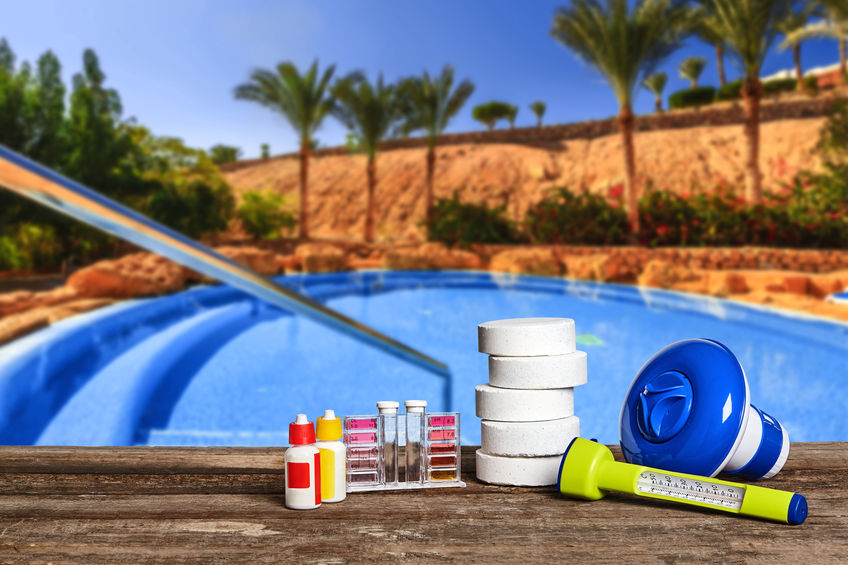Essential Swimming Pool Maintenance Tips to Keep Your Water Sparkling Clean
Preserving an excellent pool calls for a systematic method to water treatment and tidiness, which inevitably adds to both the aesthetic charm and long life of the swimming pool itself. Adhering to these basic techniques not just enhances the clearness of your pool water however likewise safeguards versus prospective concerns that might rise into costly fixings.
Examination Water Chemistry Consistently
To ensure a pleasurable and risk-free swimming experience, on a regular basis testing water chemistry is necessary. Appropriate water equilibrium not only boosts swimmer comfort but likewise secures swimming pool equipment and surface areas. The key chemical specifications to monitor consist of pH, chlorine degrees, alkalinity, and calcium firmness.
pH levels should be kept between 7.2 and 7.8, as this variety lessens skin and eye irritation while maximizing chlorine performance. Chlorine levels ought to preferably be between 1-3 parts per million (ppm) to give sufficient cleanliness without causing undesirable smells or irritation. Overall alkalinity, which acts as a barrier for pH, need to be maintained between 80-120 ppm to stabilize water chemistry and protect against changes.

Keep the Swimming Pool Filter Clean
Keeping correct water chemistry is only component of effective swimming pool treatment; maintaining the pool filter tidy is similarly important for ideal efficiency. The swimming pool filter plays a critical role in getting rid of particles, dust, and contaminants from the water, making sure a delightful and safe swimming environment. Gradually, filters can come to be blocked with particles, which can significantly reduce their efficiency.

In addition, keep track of the stress gauge on your filter system. A pressure rise of 8-10 psi above the normal operating variety usually indicates that it's time for cleansing. Overlooking to keep a tidy filter can bring about bad water flow, unbalanced chemistry, and enhanced pressure on the swimming pool pump, eventually causing greater energy costs and potential tools failing.
Skim and Brush Often

Brushing the swimming pool walls and floor is similarly important. Use a swimming pool brush with a suitable bristle type for your pool surface area-- nylon brushes for plastic or fiberglass swimming pools, and stainless steel for plaster or tile surfaces.
Maintain Proper Water Levels
Maintaining the swimming pool surface clean via regular skimming and brushing considerably adds to general water high quality, however maintaining proper water levels is just as essential for optimum pool health. The water degree in your swimming pool need to preferably be at the axis of the skimmer opening. This makes certain that your skimmer can efficiently eliminate debris and drifting contaminants, preventing accumulation that can compromise water quality and high quality.
Low tide degrees can cause pump damage, as the pump might run completely dry, running the risk of pricey repair services. On the other hand, exceedingly high water degrees can cause water to overflow, diluting chemical balances and creating an undesirable mess. Regularly inspect your pool's water level, especially Pool Inspection after heavy rains or considerable evaporation as a result of heat.
On top of that, take into consideration elements such as swimming pool usage, ecological conditions, and the sort of water functions in your swimming pool, as these can influence water levels. If you locate yourself constantly fighting rising and falling water levels, setting up a swimming pool cover can help minimize dissipation and maintain a stable degree. Eventually, regular monitoring and adjustment of water levels will certainly aid guarantee a healthy swimming atmosphere and prolong the life of your swimming pool equipment.
Arrange Seasonal Maintenance
Understanding the value of seasonal maintenance is important for ensuring your pool remains in ideal condition year-round. Each season brings unique challenges and problems that can affect the water top quality and structural integrity of your pool. By scheduling upkeep tasks on a regular basis, you can stop small issues from rising right into costly fixings.
In the springtime, focus on opening the pool, inspecting the filtering system, and balancing the chemical levels. This establishes a strong foundation for the swimming season - Pool Inspection. As summertime techniques, routine maintenance such as skimming debris, brushing surfaces, and monitoring water degrees comes to be necessary to keep sanitation and safety and security
As fall arrives, plan for cooler temperature levels by removing leaves and particles, and consider winterizing your swimming pool if it will not be utilized during the cooler months. This consists of reducing water levels and including winterizing chemicals to secure against freezing.
Throughout the winter season, periodic checks on the swimming pool cover and devices are very important to make certain everything stays intact. By adhering to a seasonal upkeep routine, you can expand the life of your pool and maintain it welcoming and risk-free for usage year-round.
Verdict
Routine swimming pool maintenance is important for ensuring water clearness and safety. By constantly examining water chemistry, keeping the swimming pool filter in optimum condition, and doing routine skimming and brushing, swimming pool proprietors can efficiently protect against algae development and various other concerns.
By maintaining appropriate water chemistry, swimming pool proprietors can ensure a risk-free setting, lengthen equipment life, and improve total enjoyment of their swimming pool.
Preserving appropriate water chemistry is just component of effective pool care; keeping the swimming pool filter tidy is equally crucial for ideal performance. Utilize a pool brush with an ideal bristle type for your pool surface-- nylon brushes for vinyl or fiberglass swimming pools, and stainless steel for plaster or floor tile surface areas.
Maintaining the swimming pool surface tidy with regular skimming and cleaning substantially adds to general water top quality, but keeping appropriate water degrees is equally important for ideal swimming pool health.In enhancement, think about aspects such as swimming pool usage, environmental problems, and the type of water attributes in your swimming pool, as these can affect water degrees.